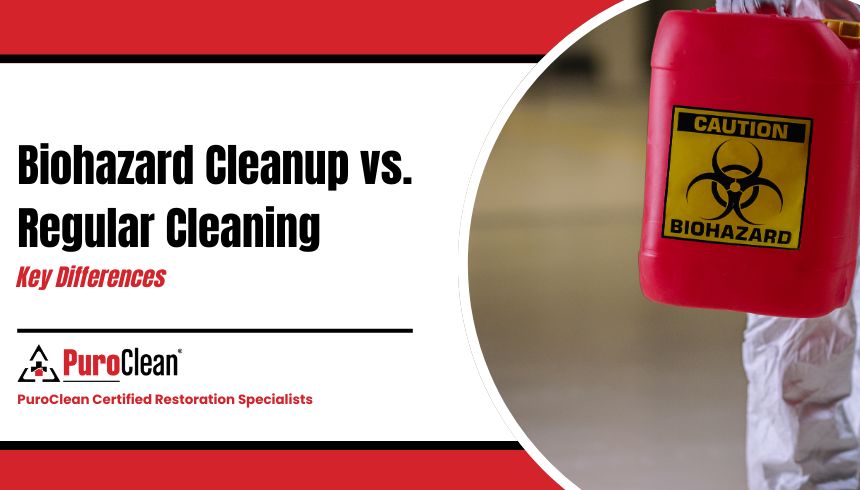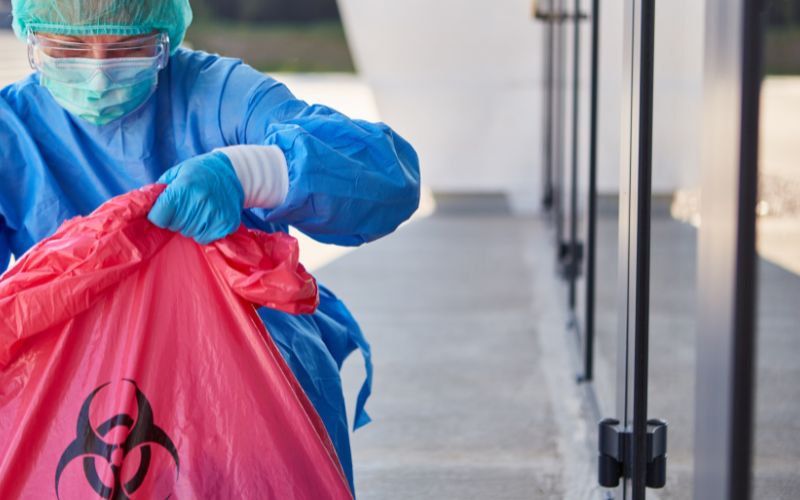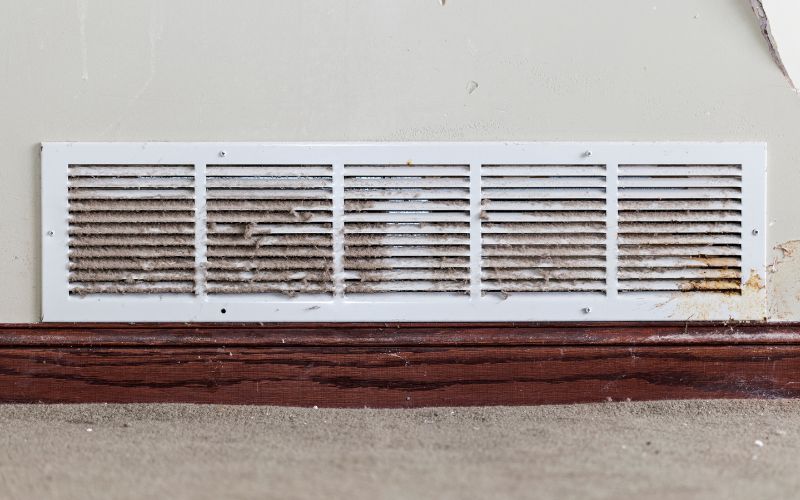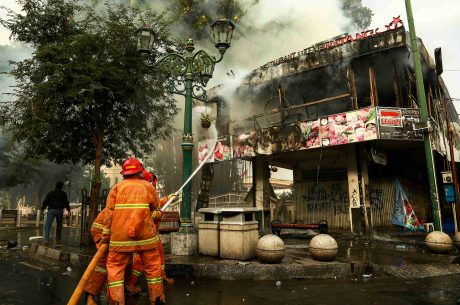
Understanding the difference between biohazard cleanup vs. regular cleaning is crucial, especially when safety and health are on the line. While regular cleaning keeps your space neat and tidy, biohazard cleanup deals with dangerous materials like blood, bodily fluids, and other infectious substances. These situations require trained professionals and specialized tools to ensure the area is safe again.
In this blog post, we’ll walk you through the key differences between these two services in a clear and simple way. Knowing when to call a regular cleaner or a biohazard specialist can protect your health and save you time, money, and stress.
What Is Biohazard Cleanup?
Biohazard cleanup is a specialized process that involves safely removing and disinfecting areas exposed to hazardous biological materials such as blood, bodily fluids, animal waste, or other infectious substances. These cleanups often follow trauma, crime scenes, or contamination events. Trained professionals follow strict safety protocols, wear protective gear, and use special disinfectants to prevent health risks. The goal is to fully sanitize and restore the area to a safe condition.
What Is Regular Cleaning?
Regular cleaning involves routine tasks that keep living or working spaces neat and hygienic. This includes vacuuming, dusting, mopping, wiping surfaces, and sanitizing bathrooms and kitchens. Regular cleaning focuses on removing visible dirt, minor germs, and everyday mess. It doesn’t require special training or equipment and is typically done on a daily or weekly schedule. The main purpose is to maintain comfort, organization, and general cleanliness in a home or business environment.
5 Key Differences Between Biohazard Cleanup vs. Regular Cleaning
There are several major differences between biohazard cleanup vs. regular cleaning, despite both aiming to maintain cleanliness. One handles dangerous contaminants while the other maintains daily hygiene. Here are five key differences that help highlight their unique roles:
1. Purpose and Type of Contaminants
Biohazard cleanup focuses on removing dangerous biological contaminants like blood, feces, and other infectious materials. Its goal is to eliminate potential health hazards and restore safety. Regular cleaning targets routine dirt, dust, and general mess. It maintains visual cleanliness but does not address biohazards or health threats. The type of material handled and the risk level involved are primary factors that make biohazard cleanup more serious than standard cleaning tasks.
2. Training and Certification
Specialized training is required for biohazard cleanup professionals due to the serious health and safety risks involved. These technicians must comply with OSHA regulations and understand how to properly dispose of biohazardous waste. On the other hand, regular cleaning typically requires no formal training or certification. Anyone with basic cleaning knowledge and tools can perform it. The higher risk associated with biohazard work demands qualified professionals, unlike the more accessible role of a routine cleaner.
3. Equipment and Materials Used
Protective gear, industrial disinfectants, and specialized equipment are necessary for biohazard cleanup. Tools like foggers, sealed waste containers, and biohazard suits are standard. These ensure that hazardous substances are safely contained and eliminated. In contrast, regular cleaning uses basic supplies like vacuums, mops, and multipurpose cleaners. These tools are sufficient for day-to-day messes. The difference in equipment highlights the seriousness and complexity of biohazard situations compared to general housekeeping tasks.
4. Health and Safety Risks
Exposure to pathogens, viruses, and toxic materials makes biohazard cleanup extremely dangerous. Professionals must follow strict protocols to avoid contamination or infection. Regular cleaning poses minimal health risks and usually involves light exposure to dust or mild cleaning chemicals. The level of threat in biohazard scenarios is significantly higher and requires both personal protective equipment and safety procedures, making it a far more hazardous and regulated service than standard cleaning.
5. Time and Cost Investment
Higher costs and longer time commitments are common with biohazard cleanup because of the level of care, materials, and expertise involved. Cleanups may take hours or even days to complete, depending on the situation. Regular cleaning is more affordable and can often be done within a short timeframe. The added expenses in biohazard cleaning reflect its complexity and risk level, while standard cleaning focuses on routine maintenance with minimal time and cost.
Frequently Asked Questions

Image by Robert Kneschke on Canva
Are biohazard cleanup services available 24/7 like emergency services?
Yes, most professional biohazard cleanup companies operate 24/7 to respond to urgent situations. Since many incidents—like crime scenes or trauma—can happen unexpectedly, a rapid response is essential to contain risks. Regular cleaning services, on the other hand, usually operate during standard business hours and are scheduled in advance rather than on demand.
Can regular cleaning services legally perform biohazard cleanup?
No, regular cleaning services are not legally permitted to handle biohazard cleanup unless they are specifically trained and certified. Biohazard work involves strict regulations and the disposal of hazardous waste, which must comply with federal and state laws. Attempting to clean biohazards without proper credentials can result in legal penalties and significant health risks.
How do companies price biohazard cleanup vs. regular cleaning services?
Pricing for biohazard cleanup vs. regular cleaning varies due to complexity and risk. Biohazard services cost more because they require certified professionals, advanced equipment, and disposal protocols. Regular cleaning is priced based on time and scope but remains far more affordable. The difference reflects the safety measures, materials, and regulations involved in handling hazardous environments during biohazard cleanup.
Can biohazard cleanup help with odor removal?
Absolutely. Biohazard cleanup includes specialized odor removal techniques that target smells from decomposition, bodily fluids, or contamination. They use industrial-grade deodorizers and equipment to eliminate odors at their source. Regular cleaning products often only mask odors temporarily and are not effective for deep or biological smells linked to serious contamination events.
Conclusion
Understanding the key differences between biohazard cleanup vs. regular cleaning is essential for making the right decision in a critical situation. While both serve to maintain cleanliness, only one protects against serious health risks. Knowing when to choose a professional biohazard service can make all the difference in safety, compliance, and peace of mind.
If you’re facing a situation that requires professional biohazard cleanup, contact us at PuroClean of Zephyrhills today. Our expert team is ready 24/7 to safely restore your property and give you peace of mind. Don’t risk your health—reach out now for trusted biohazard cleanup services.


